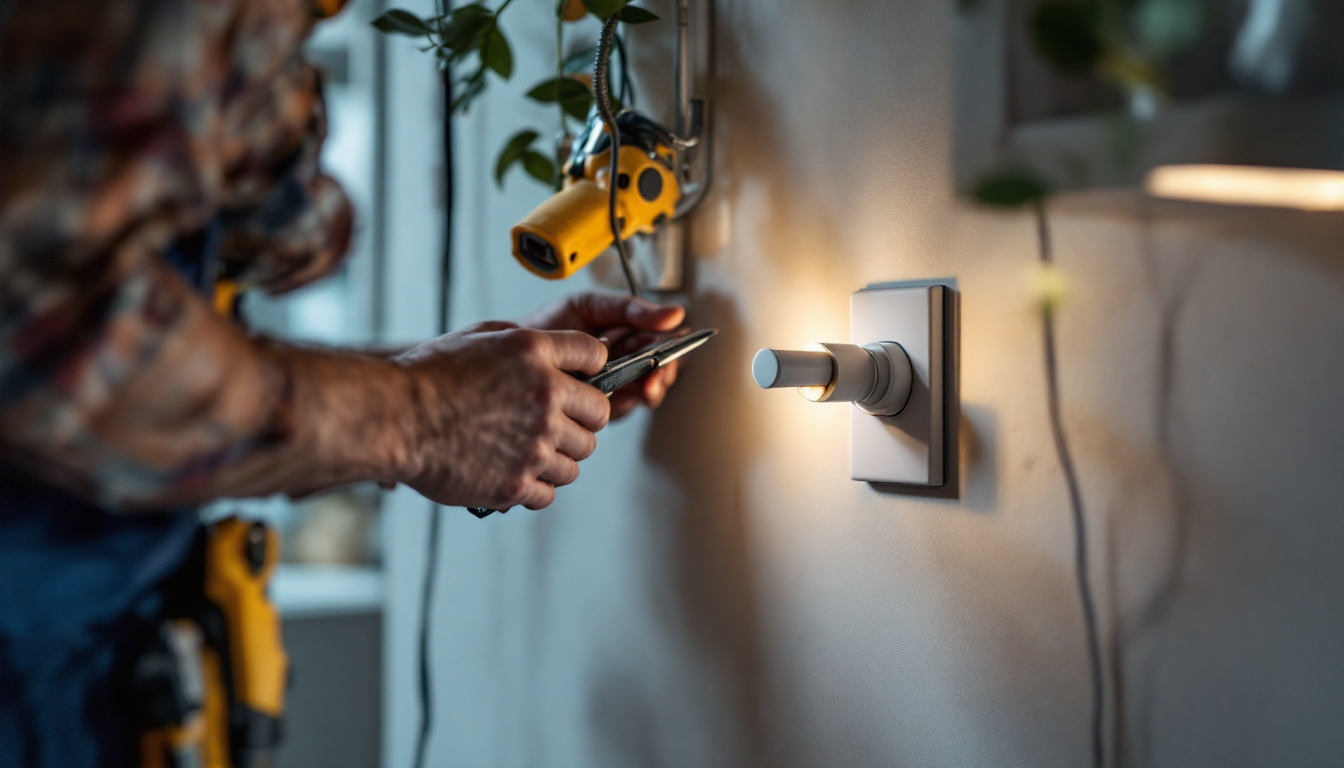
As the demand for sustainable and energy-efficient solutions continues to rise, solar powered pathway lights have become a popular choice among homeowners and commercial property managers alike. However, lighting contractors often encounter a variety of questions regarding these innovative lighting solutions. This article aims to address some of the most common inquiries contractors have about solar powered pathway lights, providing clarity and insight into their functionality, installation, and benefits.
Solar powered pathway lights are outdoor lighting fixtures that utilize solar panels to convert sunlight into electricity. This stored energy is then used to power LED bulbs, illuminating pathways, gardens, and other outdoor areas after dark. These lights are designed to be eco-friendly, reducing reliance on traditional electrical sources and lowering energy costs.
Typically, solar pathway lights are equipped with built-in sensors that automatically turn the lights on at dusk and off at dawn. This feature not only enhances convenience but also ensures that the lights operate efficiently, conserving energy when not needed. Many models also come with adjustable brightness settings, allowing users to customize the light output based on their preferences or specific outdoor conditions.
The operation of solar powered pathway lights is relatively straightforward. During daylight hours, the solar panels absorb sunlight and convert it into electrical energy. This energy is stored in rechargeable batteries within the light fixture. When night falls, the stored energy is used to power the LED lights, providing illumination for several hours, depending on the amount of sunlight collected during the day.
It’s important to note that the efficiency of solar lights can be influenced by various factors, including the quality of the solar panels, battery capacity, and the amount of sunlight the panels receive. Therefore, proper placement in an area that receives ample sunlight is crucial for optimal performance. Additionally, some advanced models feature motion sensors that activate the lights only when movement is detected, further enhancing energy efficiency and security for your outdoor spaces.
There are numerous benefits associated with solar powered pathway lights, making them an attractive option for both contractors and clients. One of the primary advantages is their energy efficiency. By harnessing solar energy, these lights significantly reduce electricity costs, making them a cost-effective solution in the long run.
Additionally, solar lights are easy to install and require minimal maintenance. Since they do not rely on electrical wiring, installation can often be completed without the need for professional electricians, saving time and labor costs. Furthermore, many solar lights are designed to be weather-resistant, ensuring durability in various outdoor conditions. Beyond practicality, solar pathway lights also contribute to a sustainable lifestyle by reducing carbon footprints. With the growing emphasis on environmental conservation, opting for solar lighting solutions aligns with eco-conscious values, appealing to a broader audience that prioritizes sustainability in their purchasing decisions. Moreover, the aesthetic appeal of these lights can enhance the ambiance of outdoor spaces, providing not just functionality but also an opportunity to express personal style through various designs and finishes available in the market.
When installing solar powered pathway lights, several factors must be taken into account to ensure optimal functionality. First and foremost is the location. It is essential to place the lights in areas that receive direct sunlight for a significant portion of the day. Shadows from trees, buildings, or other structures can hinder the performance of solar panels, resulting in insufficient charging.
Another consideration is the spacing between lights. Proper spacing not only enhances aesthetic appeal but also ensures adequate illumination along pathways. A common guideline is to space lights approximately 6 to 8 feet apart, although this can vary depending on the brightness of the specific lights being used.
To ensure that solar powered pathway lights function correctly after installation, it is advisable to conduct a test run. This involves observing the lights during the night to verify that they turn on and provide adequate illumination. If any lights fail to operate, checking the solar panel for obstructions or ensuring the batteries are charged may resolve the issue.
Regular maintenance is also important. Although solar lights require minimal upkeep, cleaning the solar panels periodically can enhance their efficiency. Dust, dirt, and debris can accumulate on the panels, obstructing sunlight and reducing charging capacity.
Despite their many advantages, solar powered pathway lights can encounter issues that may affect their performance. One common problem is insufficient brightness. This can occur if the lights are not receiving enough sunlight during the day, potentially due to poor placement or environmental factors such as overcast weather.
Another issue is the lights turning off too early. If the batteries are not fully charged, the lights may not last through the night. This can be addressed by ensuring that the solar panels are positioned correctly and that the batteries are functioning properly.
Lighting contractors can troubleshoot these common issues by first evaluating the installation site. If lights are not bright enough, relocating them to a sunnier area may improve performance. Additionally, checking the battery capacity and replacing it if necessary can help resolve issues with lights turning off prematurely.
Contractors should also educate clients on the importance of regular maintenance. Providing guidance on how to clean the solar panels and check the batteries can empower clients to take proactive steps in ensuring the longevity and efficiency of their solar lights.
The cost of solar powered pathway lights can vary widely based on several factors, including the brand, features, and quality of materials used. On average, homeowners can expect to pay anywhere from $20 to $100 per light. Higher-end models may include advanced features such as motion sensors, adjustable brightness settings, and enhanced battery life.
While the initial investment may seem higher than traditional electric lights, the long-term savings on energy costs, coupled with the reduced need for wiring and installation labor, often make solar lights a more economical choice over time.
In addition to the purchase price, contractors should inform clients about potential additional costs. For instance, if the installation site requires significant landscaping or ground preparation, this could incur extra expenses. Furthermore, if clients choose to incorporate advanced solar lighting solutions, such as smart technology or integrated security features, these options may also increase the overall cost.
Solar powered pathway lights can enhance the overall aesthetic of a landscape design. With a variety of styles, colors, and finishes available, contractors can help clients choose lights that complement their outdoor décor. From sleek modern designs to more traditional lantern-style fixtures, there are options to suit every taste.
Incorporating solar lights into landscape design not only adds functionality but also creates a welcoming ambiance. Properly placed lights can highlight garden features, illuminate pathways, and enhance safety, all while maintaining the integrity of the natural environment.
Absolutely. Solar powered pathway lights are increasingly being utilized in commercial settings, such as parks, parking lots, and outdoor event spaces. These lights can provide effective illumination while reducing operational costs for businesses. Moreover, the eco-friendly aspect of solar lighting aligns with the growing trend of sustainability in commercial practices.
When selecting solar lights for commercial use, it is essential to consider factors such as brightness, durability, and design. High-quality solar lights that can withstand heavy foot traffic and adverse weather conditions will ensure long-lasting performance in commercial applications.
The solar lighting industry is continuously evolving, with innovations aimed at enhancing efficiency and functionality. One notable trend is the integration of smart technology, allowing users to control lighting remotely via smartphone apps. This technology can enable features such as scheduling, dimming, and motion detection, further improving energy efficiency and user experience.
Another exciting development is the advancement in solar panel technology. New materials and designs are being explored to increase the efficiency of solar panels, allowing for better performance even in low-light conditions. This could significantly enhance the reliability of solar powered pathway lights in various climates.
Sustainability will continue to play a crucial role in the design and production of solar powered pathway lights. As consumers become more environmentally conscious, manufacturers are likely to focus on using recyclable materials and sustainable production practices. This shift not only meets consumer demand but also contributes to a more sustainable future for the lighting industry.
Solar powered pathway lights offer a myriad of benefits, from energy efficiency to ease of installation. By addressing common questions and concerns, lighting contractors can better understand these innovative solutions and effectively communicate their advantages to clients. As technology continues to advance, the future of solar lighting looks promising, paving the way for even more sustainable and efficient outdoor lighting options.
Incorporating solar powered pathway lights into projects not only enhances the aesthetic appeal of landscapes but also aligns with the growing emphasis on sustainability. By staying informed about the latest trends and technologies, contractors can position themselves as experts in the field, ultimately benefiting their clients and the environment.
Ready to elevate your lighting projects with the most efficient and sustainable solutions? Look no further than LumenWholesale for a vast selection of top-quality solar powered pathway lights. We provide spec-grade lighting products that meet the highest industry standards, ensuring that your installations shine with reliability and performance. Take advantage of our unbeatable wholesale prices, free shipping, and the convenience of bulk buying. Transform your outdoor spaces and impress your clients with premium lighting at the best value. Explore our collection now and make the smart choice for your lighting needs.

Discover why staying updated on receptacle electrical standards is crucial for lighting contractors.

Discover innovative strategies from top lighting contractors on enhancing your kitchen’s ambiance with under-cabinet lighting.

Discover essential tips for lighting contractors to seamlessly install high bay LED shop lights.

Explore how innovative technologies are revolutionizing the lighting industry in “Flickering Light: Transforming the Way Lighting Contractors Work.” Discover the latest tools and strategies reshaping efficiency, design, and sustainability for modern lighting professionals..